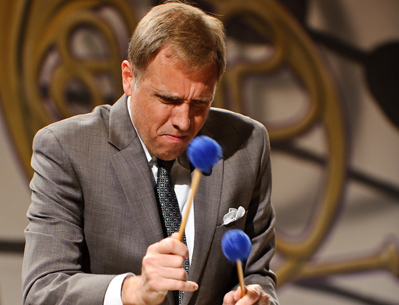Dec 9, 2025 12:28 PM
In Memoriam: Gordon Goodwin, 1954–2025
Gordon Goodwin, an award-winning saxophonist, pianist, bandleader, composer and arranger, died Dec. 8 in Los Angeles.…

Dennis Lichtman is an advocate for early styles of jazz.
(Photo: Aidan Grant)A decade before he became one of the instigators of New York’s traditional jazz revival, Dennis Lichtman was studying music business and clarinet at the Hartt School at the University of Hartford.
“They didn’t teach me to go play at a little dive bar on the Lower East Side that isn’t really a music venue, and to make no money for the first couple of years, and to just have fun, and maybe a scene will coalesce around it that you’ll become known for 10 years later,” he said recently. “But that’s what happened.”
That little dive bar is Mona’s, where, since 2007, Lichtman has been packing them in, leading Mona’s Hot 4 every Tuesday. The hot jazz scene at Mona’s attracts many of the city’s top musicians, who often drop by after their regular gigs. In recent months, guest collaborators have included keyboardist Jon Batiste, singer Cécile McLorin Salvant, clarinetist Anat Cohen and mandolinist/vocalist Chris Thile.
Additionally, Lichtman is a longtime member (on clarinet) of Brian Carpenter’s 11-piece Ghost Train Orchestra, which plays 1930s chamber jazz with crisp, period arrangements spiced by forward-looking soloists. “I’ve been playing with Dennis for 10 years,” Carpenter said. “He has one of the most stunningly beautiful clarinet sounds in jazz. And then you find out how old he is and how many other instruments he plays—it’s unbelievable.”
Lichtman’s new Just Cross The River pays tribute to the “unglamorous” borough of Queens, which, because of its affordability and location near Manhattan, was home to Louis Armstrong, Count Basie, Fats Waller and Billie Holiday.
Unlike jazz musicians who strive to sound as contemporary as possible, Lichtman remains an articulate advocate for earlier styles. Asked why he plays this music, his response is immediate: “I love it. That’s the short answer. The longer answer is that there’s something communal about music from the earlier era of jazz. … For me, it’s the jazz version of three chords and the truth … the perfect combination of broad appeal and deep sophistication. You can get as nerdy and intricate as you want. But if the rhythm section is thumping, any schmo can walk in off the street and be moved by it.” DB

Goodwin was one of the most acclaimed, successful and influential jazz musicians of his generation.
Dec 9, 2025 12:28 PM
Gordon Goodwin, an award-winning saxophonist, pianist, bandleader, composer and arranger, died Dec. 8 in Los Angeles.…

Belá Fleck during an interview with Fredrika Whitfield on CNN.
Jan 13, 2026 2:09 PM
The fallout from the renaming of the John F. Kennedy Center for the Performing Arts to include President Donald…

Flea has returned to his first instrument — the trumpet — and assembled a dream band of jazz musicians to record a new album.
Dec 2, 2025 2:01 AM
After a nearly five-decade career as one of his generation’s defining rock bassists, Flea has returned to his first…

Dec 11, 2025 11:00 AM
DownBeat presents a complete list of the 4-, 4½- and 5-star albums from 2025 in one convenient package. It’s a great…

Vibraphonist Chuck Redd found himself in the midst of a political firestorm after canceling his gig Dec. 24 at the newly renamed Trump Kennedy Center.
Jan 6, 2026 2:32 AM
The Board of Trustees at Washington, D.C.’s Kennedy Center for the Performing Arts voted on Dec. 18 to rename the…